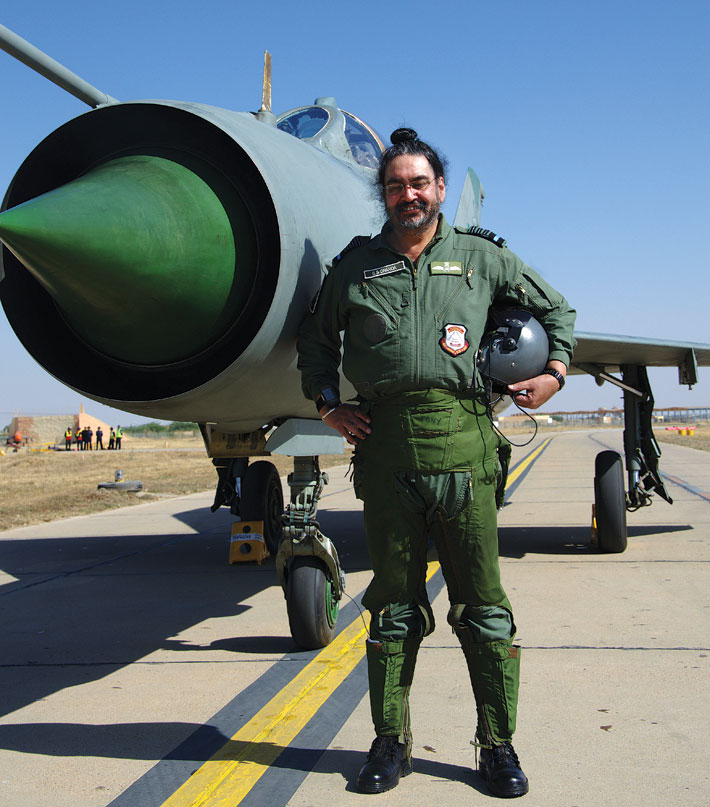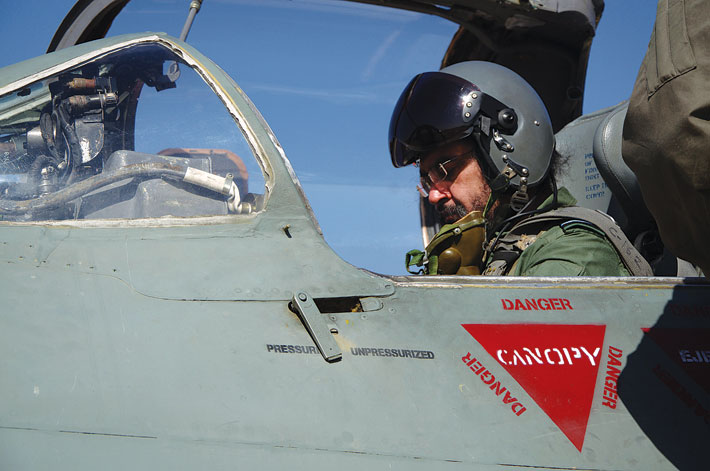INDIAN ARMED FORCES CHIEFS ON
OUR RELENTLESS AND FOCUSED PUBLISHING EFFORTS

SP Guide Publications puts forth a well compiled articulation of issues, pursuits and accomplishments of the Indian Army, over the years

I am confident that SP Guide Publications would continue to inform, inspire and influence.

My compliments to SP Guide Publications for informative and credible reportage on contemporary aerospace issues over the past six decades.
Leading from the Front!
The positive results of the solo flight on MiG-21 Type 96 by Air Chief Marshal B.S. Dhanoa, Chief of the Air Staff, IAF, are immense and cannot be quantified or measured
 | By Air Marshal B.K. Pandey (Retd) Former Air Officer Commanding-in-Chief of Training Command, IAF |

Taking the Lead: Chief of the Air Staff, Air Chief Marshal B.S. Dhanoa, who flew MiG-21 Type 96 solo, before the flight at a Forward Base in Rajasthan sector

Air Chief Marshal Dhanoa in the cockpit of MiG-21 Type 96 before the flight
On the occasion of New Year’s day this year, Air Chief Marshal B.S. Dhanoa took over as the 25th Chief of the Air Staff (CAS), Indian Air Force (IAF), from Air Chief Marshal Arup Raha who proceeded on retirement. Within two weeks after taking over as the CAS, Air Chief Marshal Dhanoa scripted history of sorts when he, while on an official visit to Air Force Station, Utarlai in Rajasthan, undertook a solo flight on the MiG-21 Type 96 combat aircraft of the IAF. This was the very first visit by the CAS to a forward operational base in the Western sector after he took over his new appointment. The stated aim of the visit was “to assess operational readiness and review the morale of the personnel stationed there”.
The Air Chief Marshal flew a sortie lasting for around 30 minutes in the MiG-21 Type 96 single-engine aircraft. The aircraft is also known as the MiG-21M. In his younger days, he had flown the same type of aircraft during the war in Kargil. In the operations against the Pakistani forces entrenched in the icy heights of Kargil, he had carried out several night strike missions in the mountainous terrain. It was for his role in and contribution to the victory in Kargil that he was honoured with the award of Yudh Seva Medal by the President of India.
The MiG-21 Type 96, one of the variants in the MiG family of combat platforms, was inducted into the IAF in the mid-1970s and has now been in service for over four decades. Overall, the MiG-21 fleet of the IAF has not enjoyed a good reputation as it has had a troubled history of accidents attributable to technical failure or malfunction. The fleet has recorded 22 major accidents in the period May 2007 to March 2015 as per a report of the Parliamentary Standing Committee on Defence submitted to the Parliament. In fact, the MiG-21 aircraft was dubbed as the “Flying Coffin”, a sobriquet that would have been somewhat discomforting for those flying the aircraft and their families. Fortunately for the IAF, this fleet is on the way out and is scheduled to be retired from service by the end of this decade.
This action by Air Chief Marshal Dhanoa is not without precedent. Earlier on, Air Chief Marshal Dilbagh Singh who was the CAS from 1981 to 1984, and Air Chief Marshal A.Y. Tipnis who held this appointment from 1998 to 2001, too flew solo missions on the MiG series while on visits to operational bases. After the solo flight, Air Chief Marshal Tipnis had said that he flew the aircraft solo to send a message to all that the aircraft was safe to fly.
However, flying a solo sortie by a serving CAS has implications and is not without potential hazards. The reliability of the MiG-21 being somewhat doubtful, a hazardous situation could well develop if a technical failure or malfunction should take place during the mission. However, the CAS undertaking a solo flight especially on the MiG-21, would certainly have a phenomenal impact on confidence levels and the morale of personnel of not only the squadron which operates the particular aircraft, but on the entire air force fraternity.
Thus a solo flight by Air Chief Marshal Dhanoa though lasting for a mere 30 minutes would have helped restore the confidence of pilots in the IAF who are deputed to fly this aircraft as also the other variants of this platform. Also, it would elevate the spirits of the technical personnel who maintain and service the fleet as a solo flight by the CAS on the aircraft would symbolise the trust and faith he reposes in the capability, competence and dedication the technical team. This symbolic action by the CAS will also help strengthen the bonds between officers and airmen in the organisation. The positive results of the solo flight by the CAS are immense and cannot be quantified, measured or assessed.
In the final analysis, Air Chief Marshal Dhanoa is clearly leading from the front and has started his tenure as the CAS literally with a bang!





